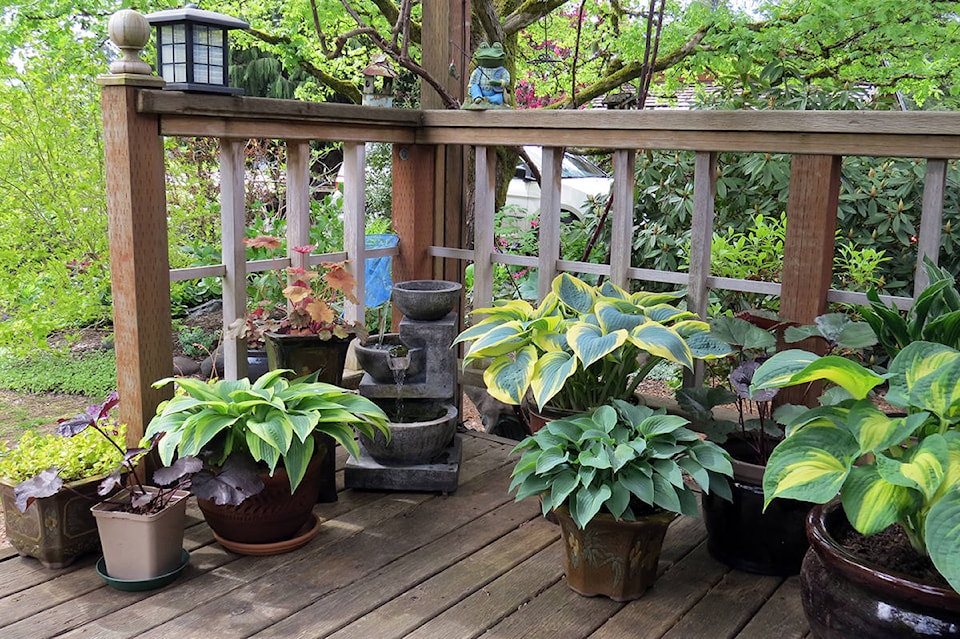Leslie Cox
Special to The Record
Garden prognosis appears likely in thanks to a less harsh winter.
Average temperatures for January and February 2018 were noticeably warmer than the same months in 2017, according to my weather readings in our garden.
However, not all plants are poking up yet. Some specimens, like many grasses and perennials which put on late summer/fall displays, are late starters. But what has arrived on the scene is proving encouraging.
Most of the garden cleanup is under our belts…well, except for my procrastination in pruning the rugosa rose hedge, due to its propensity for thrusting thorns into my hands. It is now time to take stock of the landscape design.
Right now, the garden is looking pretty good; not so crowded and what plants are on display have a pleasing effect on the visual palette. But, as those herbaceous perennials increase their dimensions to full size, and the slowpoke plants make their timely entrance, it soon becomes apparent some early springtime remedial action should have been undertaken. (This is when all those wonderful photos you took of your garden last spring, summer, and fall come in handy).
You may get away with making a few plant divisions on those species which are hogging all the space. Many hostas need regular dividing, especially the blue-leaved ones which seem to be on steroids. We have a number that benefit from division every three years or so, such as ‘Blue Mouse Ears’, Hosta sieboldiana var. elegans, and Hosta nigresens.
Then there are large plants, such as Gunnera manicata and Rheum palmatum…known by their common names as giant rhubarb and ornamental rhubarb. These ones you definitely want to divide in early spring. Normally, a gunnera will be 10 feet high and 14 feet wide. Rheum gets as high but is only six feet wide. However, both these plants are rhizomatous - they grow exponentially wider through their roots. And believe me, a gunnera can take over a small garden bed quite quickly. Ours has since been removed and replaced with the rheum. Thankfully, this ornamental rhubarb appears to be slower growing than the gunnera. So far.
Speaking of removing, we chopped down my Pacific dogwood tree, Cornus nuttallii, last month. Since it contracted anthracnose in 2014 – a disease that is extremely hard to eradicate– the tree has been losing vigour. Not to mention the mess of diseased leaves which fell off the tree onto my hostas and ferns throughout the summers. I seemed to be constantly raking that bed to bag up the leaves for garbage.
It was a hard decision to make, taking out that tree. I am fond of dogwoods and had 20 years invested in that particular tree. Compared to perennials, and even shrubs, most trees are not easily replaced since they need time to mature properly.
Truthfully, the dogwood was almost removed about 15 years ago as it had yet to bloom. But I shook my fist at it that spring whilst exclaiming “bloom or else!” and darn if it did not burst out in flower. It has faithfully flowered every year since, although last year’s performance was less than stellar.
I have been thinking about putting in a Cornus kousa, in another bed away from the anthracnose area, because this dogwood appears to be resilient to the disease. I must make up my mind quickly because of the time investment needed to grow another tree.
There are lots of other reasons for making changes to your garden design besides the ones mentioned here. For those and some helpful information on how to put in a new bed without killing your back, read my latest blog on my website.
You can also find more information about anthracnose and its effect on dogwood trees on my website: duchessofdirt.ca.
Leslie Cox co-owns Growing Concern Cottage Garden in Black Creek. Her website is at www.duchessofdirt.ca and her column appears every second Thursday in the Record.
